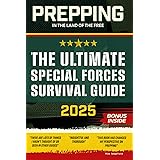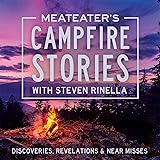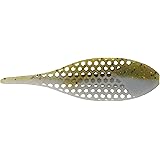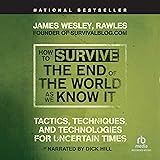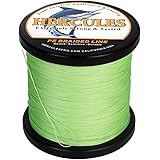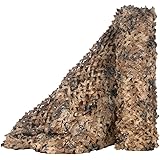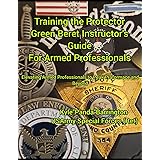Securing sustenance in the wild is a critical skill. The video above beautifully illustrates practical foraging. It shows how readily available wild food can be. This includes snails and eggs. These natural provisions offer vital nutrition. They become essential in a survival scenario. Understanding their collection and preparation is key for any outdoor enthusiast.
The Art of Foraging: Discovering Wild Snails for Survival Food
Wild snails represent a readily available protein source. They are a surprisingly excellent source of sustenance. These resilient mollusks thrive in diverse environments. Ponds, slow-moving streams, and damp forest floors are prime locations. Foraging for them can supplement any diet. It is a time-tested method of survival food acquisition. Their abundance often makes them a reliable resource.
Identifying Edible Snails and Their Habitats
Identifying truly edible snail species is paramount. Many freshwater varieties are commonly consumed. Land snails, such as Roman snails or garden snails, are also popular choices. Their shells are typically distinct in shape and size. Always confirm identification with a reliable field guide. Misidentification carries significant health risks. Avoid consuming unknown species completely.
Snails prefer moist, sheltered habitats. They are often found under logs or rocks. Dense vegetation along water bodies attracts them. Imagine carefully scanning the damp leaves after a rain. You might discover several plump specimens. Their presence indicates a healthy ecosystem. Collection usually involves gentle hand-picking. This minimizes habitat disturbance significantly.
Safe Preparation of Foraged Snails
Snails require careful, thorough preparation. Purging is the first vital step. This process cleanses their digestive systems. Place them in a container with fresh greens. Allow several days for the cleansing. This removes any potentially harmful substances. The purging stage is non-negotiable for safety. It ensures a cleaner, safer meal.
After purging, snails are meticulously cleaned. Their shells are often scrubbed free of debris. Boiling is a highly recommended cooking method. It effectively eliminates parasites and bacteria. Snails are boiled for a minimum of 10-15 minutes. Steaming is another viable option. Ensure thorough cooking always occurs. This guarantees a safe culinary experience.
Harvesting Wild Eggs: A Natural Source of Protein
Wild eggs are nature’s concentrated protein source. They offer invaluable nutrients in survival situations. Locating them demands quiet observation skills. Many wild birds lay eggs in spring. Some reptile species also offer edible eggs. Their seasonal availability must be considered. Wild eggs are a potent source of calories. They support sustained energy levels effectively.
Locating and Identifying Wild Nests
Bird nests are commonly concealed. Look in dense shrubbery or tall grasses. Tree hollows and rocky crevices are also used. Reptile eggs are often found buried. Sandy banks or rotting logs are preferred spots. Imagine observing a bird’s secretive movements. It could lead you to a hidden nest. Quiet presence increases your chances of discovery.
Identifying the species is crucial. Avoid disturbing nests of protected birds. Never remove all eggs from a clutch. This ensures the population’s survival. Ethical foraging respects wildlife populations. Knowledge of local laws is always advised. Responsible harvesting is paramount for environmental preservation. It maintains ecological balance over time.
Ensuring Safety with Wild-Foraged Eggs
Wild eggs carry inherent health risks. Bacterial contamination is a primary concern. Salmonella can be present. Always assume eggs are contaminated. Thorough cooking is absolutely necessary. Raw consumption is never recommended. Their freshness can be difficult to ascertain without tools.
A simple float test aids assessment. Fresh eggs sink to the bottom. Older eggs will often float. Discard any floating or cracked eggs immediately. Boiling is a reliable cooking method. Eggs should be boiled until firm. This destroys harmful bacteria effectively. Your safety must be prioritized above all else.
Primitive Cooking Techniques for Wild Foraged Food
Cooking wild food safely is a core survival skill. Primitive techniques use minimal equipment. Fire remains the indispensable heat source. It is built from gathered natural materials. Dry wood and tinder are easily found. A simple cooking setup is often improvised. This approach truly embodies bushcraft principles. It relies entirely on resourcefulness.
Boiling and Steaming Foraged Delights
Boiling is an efficient cooking method. It effectively purifies water, too. Water is heated in a sturdy container. Snails are simmered gently. Eggs are added carefully. A simple metal pot works well. Even a hollowed rock can be utilized. Boiling ensures uniform heat distribution. It reliably cooks food thoroughly.
Steaming also cooks food thoroughly. It often preserves delicate textures and nutrients. A makeshift steamer can be fashioned easily. Hot rocks are placed in a pit. Wet leaves create an effective seal. Food is positioned above the steam. This method requires careful management. It results in tender, moist edibles for your survival food meal.
Enhancing Flavor with Wild Seasonings
Wild edibles offer natural flavor enhancers. Many indigenous plants are culinary gems. Wild garlic or ramps add a pungent kick. Imagine gathering fragrant wild thyme. It complements savory snail dishes beautifully. Pine needles can infuse a smoky aroma. Local knowledge reveals many possibilities. These natural additions elevate a simple meal.
Wild berries can add a sweet contrast. Sour wild plums provide tanginess. These can be cooked into delicious sauces. They elevate a basic meal significantly. Experimentation often creates unique tastes. Natural ingredients define wilderness cuisine. This makes survival food more enjoyable. It adds pleasure to essential sustenance.
The Nutritional Value of Foraged Snails and Eggs
Snails and eggs are remarkably nutritious. They provide vital macronutrients. High-quality protein is abundant in both. This fuels the body in strenuous conditions. Essential fats are also present. These support cellular functions effectively. Wild foraging offers nutrient-dense options. It ensures critical bodily support.
A spectrum of vitamins is contained. B vitamins are crucial for energy metabolism. Minerals like iron support blood health. Calcium strengthens bones. Wild eggs are particularly rich. They offer a comprehensive nutrient profile. This natural bounty sustains life efficiently. Such valuable survival food is indispensable in the wild.
Embracing Sustainable Foraging Practices
Sustainable foraging is a moral imperative. Over-harvesting depletes natural stocks quickly. Always take only what is needed for sustenance. Leave ample for replenishment. Avoid disturbing sensitive breeding areas. Respect the ecosystem’s delicate balance. This practice ensures future harvests. It protects wild food sources.
Learn about local flora and fauna. Understand what is endangered in your region. Adhere to regional regulations strictly. Your actions impact the environment directly. Knowledge protects natural habitats. It preserves these wild food sources. Responsible collection supports long-term survival. This ensures the availability of future survival food.


